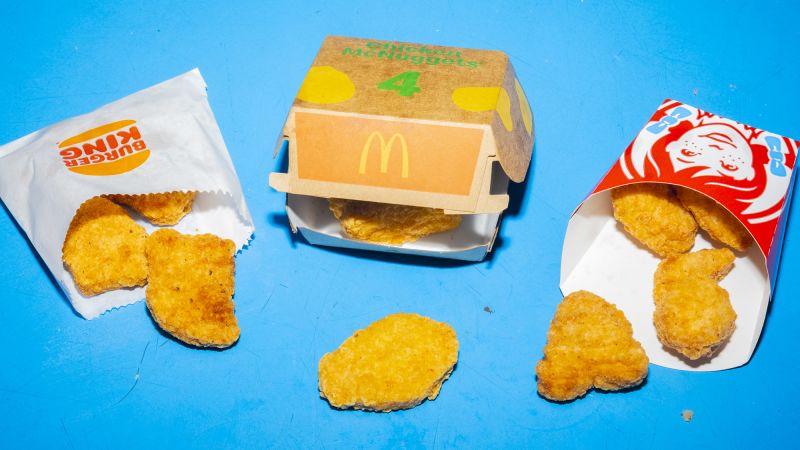New York
CNN
—
In 1995, Chick-fil-A planted a billboard in Georgia adorned with three cows holding up signs declaring “Eat Mor Chikin.” That image later became a hallmark of its advertising campaign persuading people to ditch their burgers for tenders.
Three decades later, the adage is perhaps truer than ever.
Chicken-centric chains, notably Raising Cane’s and Wingstop, were the strongest performers among all restaurant categories in 2024. Sales for both chains jumped by double-digits, far out-pacing their burger rivals, according to a new report from consumer research firm Circana.
The insatiable hunger for chicken, mainly nuggets and tenders, has forced McDonald’s, Taco Bell and Wendy’s to adjust their offerings and invest more heavily in the category as consumers, well, eat mor chikin.
“Patrons still love burgers, but chicken is really versatile and younger consumers have a stronger preference for chicken,” said David Henkes, senior principal at consumer research firm Technomic.
In particular, younger eaters think there’s a “health halo” with chicken, perceiving it as healthier compared to red meat — despite the poultry being coated and fried, he told CNN. Beyond that, chicken tenders and nuggets are easier to eat on-the-go compared to sandwiches and are more tailorable to specific tastes.
Tenders and nuggets “can be customized with sauces in ways perhaps are a bit more limited with sandwiches,” Henkes added, with people often sharing their preferred sauces on TikTok.
Wingstop, which is finding success thanks to its focus on poultry, said its research shows that Gen Z loves experimenting with sauces — the company sells about a dozen varieties — and prefers chicken over red meat.
The chain recently relaunched its tenders with a crispier coating, another Gen Z preference, so “it fits perfectly with the Wingstop demographic,” which trends younger than its competitors, Mark Christenson, Wingstop’s chief revenue officer told CNN.
Still, chicken has a “universal appeal,” Christenson said. “Protein is obviously very big right now and I haven’t met anybody who didn’t like chicken.”
Another factor in the rising popularity for tenders and nuggets is the texture. A recent survey conducted by consulting firm Menu Matters shows that “crispy” and “crunchy” descriptions rank high in eaters’ preferences, explaining why the chains now market it as “crispy chicken” rather than “fried.”
“Not using ‘fried’ may be less about the fact that it’s bad or consumers are backlashing against it, but rather fried doesn’t offer any emotive element for the consumer other than potentially a feeling of guilt,” Maeve Webster, president of Menu Matters, told CNN.
In fact, mentions of “crispy chicken” on fast food menus in the United States has grown 16% since 2021, according to Datassential Menu Trends. The research firm also discovered that the number of new crispy chicken items has doubled in the first quarter of this year compared to the same time period in 2024.

Like Taco Bell, which is trying to corner the “crispy chicken” sector with an assortment of poultry offerings. The chain recently brought back its nuggets for a second trial run, and if it’s as successful as last time, it plans to add more chicken items next year, possibly including strips.
“We’re getting into the chicken game. We’re serious about it and we want to make sure that we do it our way,” Taylor Montgomery, Taco Bell’s chief marketing officer, told CNN. “We want to make sure that we make Taco Bell a destination for crispy chicken.”
Although the hysteria around the Popeye’s chicken sandwich from five years ago has dissipated, the item still holds a big place on menus. In the past few weeks, Wendy’s has added a new Cajun-inspired version, Chick-fil-A brought back a barbecue option and Zaxbys is giving it a remix with new quesadillas stuffed with tenders.
“Sandwiches aren’t dead by any means, but the innovation and excitement has seemingly moved over to tenders and nuggets,” Technomic’s Henkes concluded.

